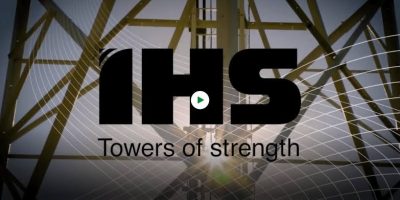He could hardly have summoned the same smile in 1999 when his first bet on Nigeria’s telecoms sector fell through.
Celia Motophone Limited, a communications company he was brought from Lebanon to lead as deputy managing director at the time, was among the companies granted licences to provide GSM network services in Nigeria by General Abdulsalam Abubakar, the then Military Head of State who was pushing to deregulate the Nigerian telecoms sector.
Out of the six companies that got the licences, only Motophone and Communications Investment Limited (CIL) were firmly on the ground. Both were however unable to secure the needed interconnection with NITEL, the only national gateway carrier. Motophone also had an image problem: it was connected to the Gilbert Chagouri family that was very close to the late military dictator, General Sani Abacha.
It was not a surprise then when President Olusegun Obasanjo, who led the democratic dispensation in Nigeria from 1999, described the licensing exercise as fraudulent, revoked the licences, and introduced the telecommunication policy that empowered the Nigerian Communications Commission (NCC) to reorganise, auction, and issue fresh licences to successful companies.
Darwish, 27 years old at the time, and his company Motophone were again shortlisted among the seven contenders for the new licensing regime. The other contenders were United Telesys, Reliance Telecoms, CIL, MTS, NITEL, and MTN. Motophone was eventually disqualified after a series of court orders and allegations by NCC that the company may have manipulated its way to the first licence. The NCC removed the rights of Motophone before the auction. Eventually, five companies were shortlisted for the four GSM licences.
Down on his luck but undaunted, the young Lebanese entrepreneur decided to place his bet in a different segment of the nascent telecoms industry – building and operating towers.
That new bet proved to be genius. By listing on the New York Stock Exchange in chase of a valuation of $7 billion, IHS Towers has not only become the largest tower company in Africa it is also now more valuable than MTN Nigeria and Airtel Africa both of which got the GSM licences.
The making of IHS Towers
Prior to the emergence of IHS Towers, telecoms services in Nigeria under NITEL had suffered due to scarcity of base stations. The national carrier not only monopolised the market, but it also installed and operated the base stations. As of 1995, there were only 3,000 lines and three base stations in Lagos State. Between 1995 and 1999, the total number of connected fixed lines grew rapidly to about 550,000 while cellular lines were 40,000.
Despite international initiatives and worthy objectives, Nigeria, with a population of over 120 million at the time, had in the year 2000 one of the lowest teledensity rates in the world at 0.38 percent.
It was also a period when the county’s peers in Africa were beginning to take deregulation seriously and getting results for initiating the process.
Hence, in the late 1990s some African countries, such as Ghana, Uganda, and Zimbabwe, started issuing new cellular telephony licences. This led to dramatic increases in teledensities.
For example, the number of cellular subscribers in Zimbabwe increased from 20,000 to 150,000 in the 12 months before August 1999, whereas the number of fixed lines hovered around 250,000 over the same period. In Uganda the number of mobile subscribers overtook the number of fixed lines in July 1999, less than 10 months after MTN Uganda (the largest cellular operator in the country) started competing against MSI-Celtel.
Importantly, the GSM licences went hand-in-hand with base tower increases. One report claimed that Darwish’s company Motophone had installed towers in five Nigerian cities within seven months before having its licence revoked by the government.
In 2001, the same year MTN and Econet were granted their GSM licences, Issam Darwish together with his brother Mohamad Darwish and a friend William Saad founded IHS. IHS Holding Limited was however incorporated in the Republic of Mauritius under the Mauritian Companies Act 2001 as a private limited liability company. At the time, it was the only privately owned tower company in Nigeria.
Running IHS Towers
In the beginning, IHS Towers was building towers from scratch and operating them for telecom operators. While this proved to be a lucrative market for IHS, a lack of cooperation (and an excess of capital) meant many providers like MTN built their own towers without the proper planning to manage them.
Hence, despite being the only company providing exclusive tower services, IHS had to compete with the same operators it was seeking to serve.
The company soon realised there was more to gain from partnering and taking over existing towers than installing new ones.
Operating a cell tower in a power-challenged country like Nigeria is a tug of war. Due to the unreliability of electricity, each cell tower requires two generators to keep it running for 24 hours plus a battery to serve as a backup. The company should also be able to guarantee diesel oil that feeds the generators.
Although it was short on cash compared to the GSM providers, IHS had an advantage in that it was able to solve these problems from the beginning. Today, it is constantly seeking new innovation to further improve efficiency.
“The energy situation in Nigeria hasn’t changed much in 20 years, but we have learned new tactics,” Darwish said in an interview this year.
“We now use solar energy, smart batteries, and even wind; we are even testing a Tesla battery,” Darwish said.
It wasn’t until 2008 and the financial crisis that Darwish was able to convince the telecom operators in Nigeria of the value of cooperation. Before then, the company had in 2004 launched the Managed Services Operations for MNO-owned Towers with services including maintenance, security, and power supply.
In 2009, IHS began owning towers and leasing space to mobile network operators (MNOs) in Nigeria and launched its collocation operators through which it leased space to other MNOs. The big moments arrived when it sealed a deal to acquire MTN’s tower assets. In 2014, IHS acquired a total of 10,966 towers out of which 4,154 came from MTN Nigeria and 2,116 towers from 9Mobile. It further acquired 4,696 towers from MTN Nigeria in 2015.
Road to IPO
“Congrats to longtime IFC client IHS Towers, the biggest operator of mobile phone towers in Africa, on its IPO on the New York Stock Exchange,” tweeted Stephanies von Friedeburg, VP, Operations at the International Finance Corporation (IFC) on the day IHS finally rang the bell and went live on the global exchange at a price $17.65 per share.
“This is a huge step for IHS in getting more communities across the continent connected. A proud moment for a great African company.”
Apart from realising it needed collaboration to break the operational barriers in the telecom sector in Nigeria and elsewhere in Africa, IHS also knew it needed unlimited access to liquidity to be able to provide the quality of service it was aiming for and control a sizable share of the market in Nigeria and Africa.
Shortly after increasing its tower portfolio in Nigeria, Côte d’Ivoire, and Cameroon through acquisition, IHS completed a $2 billion equity round from investors such as IFC, Ecobank, Standard Chartered, and Investec. Darwish had said a substantial part of the money would go towards paying for its acquisitions, while the remainder would be spent on boosting its infrastructure in the five countries it operates in.
Darwish had predicted that Africa could need 200,000 to 300,000 mobile towers with Nigeria alone needing 40,000 over a period of 10 years to meet the demand for broadband. This would require IHS raising more debt as soon as possible.
“Things keep growing and evolving for us so we may come back to the market very soon,” he said.
In 2018, IHS, together with its shareholders including Goldman Sachs Group, Wendel, and MTN Group approached the New York Stock Exchange seeking to raise $1 billion at a valuation of $10 billion. The plan was postponed with reports citing the proximity of the 2019 general elections in Nigeria and the outcome of the sale of 9Mobile, a customer of IHS.
While it waited, in 2019 the company refinanced outstanding debt of its Nigerian operations (approximately $1.8bn), including issuing $1.3 billion of new senior notes, as well as new senior credit facilities, resulting in a more simplified debt capital structure, extended maturities, and lower cost of debt. As of 2019, IHS had raised more than $5.5 billion in funding.
In terms of assets, IHS accounts for 16,522 towers of the 37,625 towers in Nigeria, representing almost 50 percent of the total in the market as of June 2021. It is also the number one tower provider in five markets where it operates in Africa and ranks fourth in the world.
IHS goes public
The listing on the New York Stock Exchange (NYSE) went live at a share price of $17.65 for 1.6 million shares, or 16.0 percent below the IPO price, to value the company at about $5.8 billion. The stock has traded within a range of $16.83 to $18.48 since then.
“We’re pleased with the successful listing of IHS Towers, the fourth largest tower company globally.
‘The listing gives MTN Group a strong liquidity platform that will support the Group’s strategy of accelerating growth in its African markets, Ralph Mupita, MTN Group president/CEO, said
Apart from being the biggest customer of IHS, MTN owns a stake of 29 percent in the tower company. Following the listing, MTN now holds 85,176,719 ordinary shares.


